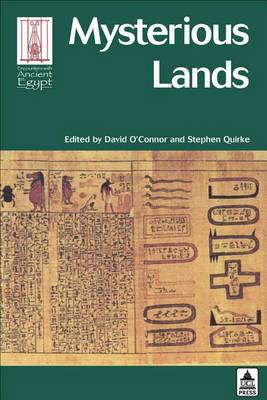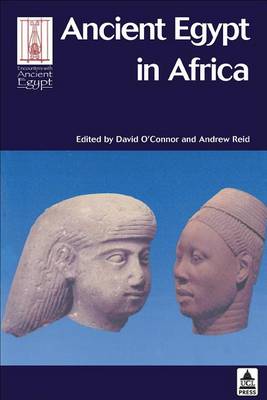OLD SERIES - DO NOT USE Encounters with Ancient Egypt
2 total works
The discipline of Egyptology has been criticised for being too insular,with little awareness of the development of archaeologies elsewhere. It has remained theoretically underdeveloped. For example the role of Ancient Egypt within Africa has rarely been considered jointly by Egyptologists and Africanists. Egypt's own view of itself has been neglected; views of it in the ancient past, in more recent times and today have remained underexposed.
Encounters with Ancient Egypt is a series of eight books which addresses these issues. The books interrelate, inform and illuminate one another and will appeal to a wide market including academics, students and the general public interested in Archaeology, Egyptology, Anthropology, Architecture, Design and History.
Mysterious Lands covers two kinds of encounters. First, encounters which actually occurred between Egypt and specific foreign lands, and second, those the Egyptians created by inventing imaginary lands.
Some of the actual foreign lands are mysterious, in that we know of them only through Egyptian sources, both written and pictorial, and the actual locations of such lands remain unknown. These encounters led to reciprocal influences of varying intensity. The Egyptians also created imaginary lands (pseudo-geographic entities with distinctive inhabitants and cultures) in order to meet religious, intellectual and emotional needs.
Scholars disagree, sometimes vehemently, about the locations and cultures of some important but unlocated actual lands. As for imaginary lands, they continually need to be re-explored as our understanding of Egyptian religion and literature deepens.
Mysterious Lands provides a clear account of this subject and will be a stimulating read for scholars, students or the interested public.
The discipline of Egyptology has been criticised for being too insular,with little awareness of the development of archaeologies elsewhere. It has remained theoretically underdeveloped. For example the role of Ancient Egypt within Africa has rarely been considered jointly by Egyptologists and Africanists. Egypt's own view of itself has been neglected; views of it in the ancient past, in more recent times and today have remained underexposed.
Encounters with Ancient Egypt is a series of eight books which addresses these issues. The books interrelate, inform and illuminate one another and will appeal to a wide market including academics, students and the general public interested in Archaeology, Egyptology, Anthropology, Architecture, Design and History.
Geographically, Egypt is clearly on the African continent, yet Ancient Egypt is routinely regarded as a non-African cultural form. The significance of Ancient Egypt for the rest of Africa is a hotly debated issue with complex ramifications. This book considers how Ancient Egypt was dislocated from Africa, drawing on a wide range of sources.
It examines key issues such as the evidence for actual contacts between Egypt and other early African cultures, and how influential, or not, Egypt was on them. Some scholars argue that to its north Egypt's influence on Mediterranean civilization was downplayed by western scholarship. Further afield, on the African continent perceptions of Ancient Egypt were coloured by biblical sources, emphasizing the persecution of the Israelites.
An extensive selection of fresh insights are provided, several focusing on cultural interactions between Egypt and Nubia from 1000 BCE to 500 CE, developing a nuanced picture of these interactions and describing the limitations of an 'Egyptological' approach to them.

